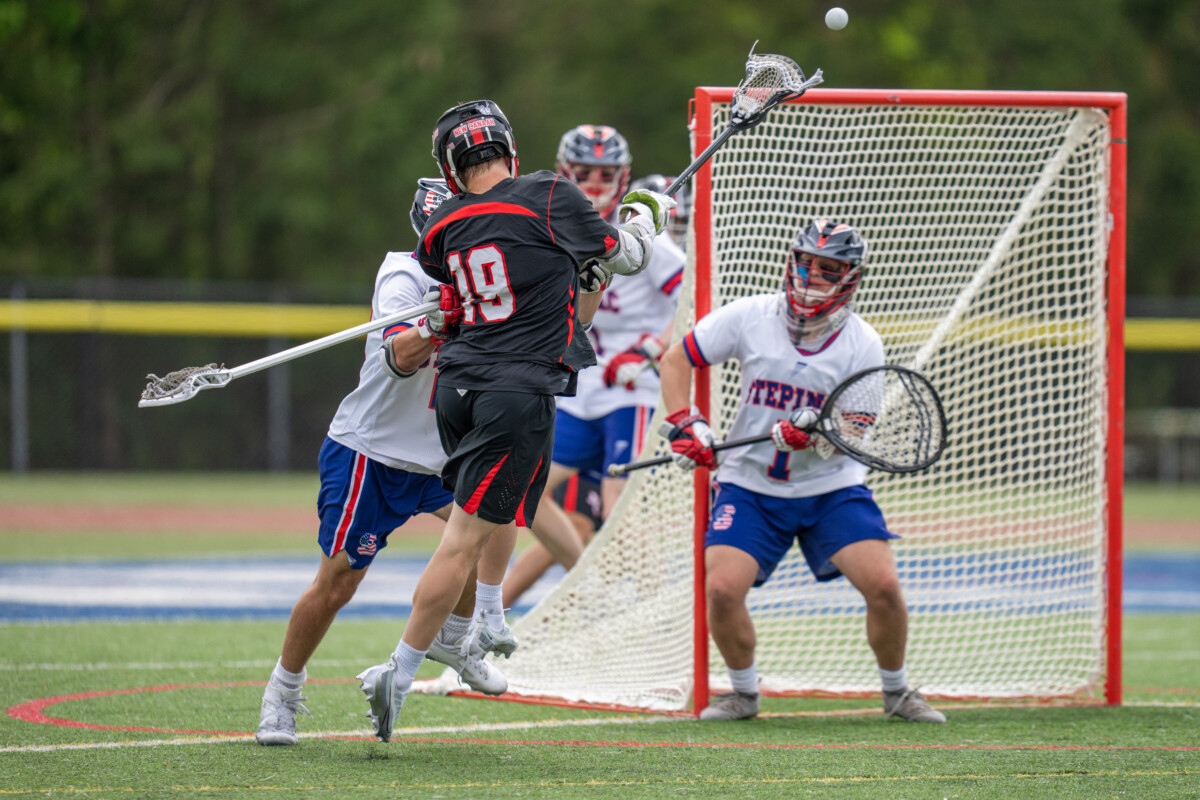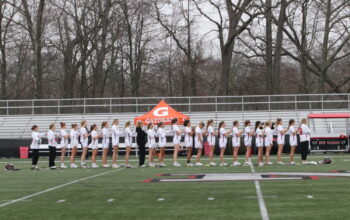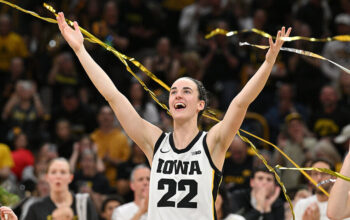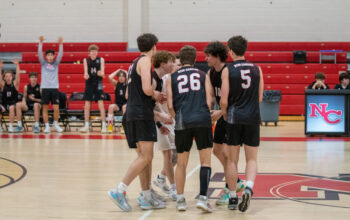Izzy Appelt, Editor in chief
@izzyAcourant
As the winter air begins to warm and the days extend longer, the beginning of spring season is right around the corner and many athletes are gearing up in hopes for a well performed season. However, for some athletes this transition isn’t so easy and instead requires diligent training and the balancing of winter postseason games with preseason obligations. Specifically, the change from skating on ice to running on turf is a big one for multi-sport Ice Hockey and Lacrosse Players each year.
Senior Hockey Captain and Lacrosse player Max Lowe has been playing both sports since a young age, becoming pretty familiar with the transition between his two main sports. “I have been playing hockey since I was about 2 years old, like most hockey players you have to skate really the second you can walk. Lacrosse is the same way, you start playing in the beginning of kindergarten and most of our multi-sport athletes can relate to that,” He said. “I made both the varsity hockey and lacrosse team my sophomore year so for the past 3 years I have had to work through the transition between these two seasons.”
According to Max this transition often requires a special training that slowly incorporates hockey players back into running sports in order to prevent injury and get them geared up for the season. “For the first week of lacrosse season we actually don’t pick up our sticks. Coach Buzzeo does a really good job bringing in Creg Votelli from Combine training in Darien and we do a bunch of light running and band work to build up our resistance movement,” he said. “During this week we really just focus on building up our muscles, stretching, and progressively building up our running before easing into our play.”
Senior Lacrosse and Hockey Captain Lexie Tully also stresses getting back onto the turf to help better manage the seasonal switch. “It’s definitely difficult because you’re going from gliding forward and backwards to lateral movements. It’s really hard on your legs, but if you consistently run throughout the hockey season on turf, it definitely makes the transition a bit smoother,” Lexie said.
New Canaans athletic trainer Shayna DeLuca spoke on the common injuries seen in these athletes as the spring approaches. “In a skate you are locked tight in, and don’t have as much mobility. So as athletes get back into sneakers and are facing the direct force of the turf, we see a lot of kids coming in with shin splints,” she said. “To navigate this I would recommend these athletes not only run, but actually jump rope to ease yourself back into direct impact with the ground. ”
Not only do winter athletes train when the spring season comes around, Max shared that he makes sure to put in his own time throughout the eternity of the year to ensure peak performance. “I aim to lift as much as I can in the offseason by either going into Combine Training or picking up the weights in my house,” he said. “ When I do this at least three to four times a week, especially when I am not in season for either sport, I feel the effects on my performance during both seasons.”
The importance in this transition is stressed by recurring injuries that arise each year for athletes that are switching from skating to running movements and for Max these past injuries have helped him figure out the best way to manage the change in movement. “In the past I have had a really tough time transitioning. My freshman year I broke my iliac spine, my sophomore year I had Achilles tendonitis but in the past couple years they have really done a much better job with the transition. Last year, my junior year, I was used to it, so I really didn’t feel anything at all and I am hoping for the same thing this year.”
On the girls side, one common injury has really made the training of this transition imperative with about six ACL injuries within past years, four of which were also ice hockey players. “ACL tears are such a common injury in girls lacrosse but especially since my sister has a history with this injury, my sister and I wanna be extra careful, “ Lexie said. “We have a warm up that a few of the girls on team do each day given by a physical therapist that specifically is meant to reduce the chance of such a serious injury and honestly I think everybody should be doing something like it, even if they aren’t coming off the ice.”
Thankfully, spring coaches offer a lot of support to their multi-sport athletes as they come off their postseason. “Coach Woods is always great about acknowledging the hockey girls whether it’s through offering alternative running towards the beginning of the season or letting us take the treatment time we need,” Lexie said. “It’s incredibly helpful to know that we have that support when we are trying to stay healthy while contributing as much as we can.”
Nonetheless, being a multi-sport athlete has its payoffs especially from an athletic standpoint. “Training in different plains of motion will make any player a overall better athlete. This is why learning to navigate different forces will allow you to be strong in all these physical areas and in the long run avoid chronic injury,” Shayna said.
Despite the challenging nature of this transition, the benefits of being a multi-sport athlete show through aspects of leadership, athleticism, and competitiveness that play a role in the performance of spring and winter sports holistically. “Being a multi-sport athlete brings a lot of advantages too, like hockey players tend to have an easier time shooting in lacrosse. Additionally really just the unique game of hockey and the way the offense is run really builds team chemistry that brings good energy into our lacrosse season. As for being a leader, playing two sports you become used to the pressure of playing in high intensity environments and you can really show your teammates firsthand that you have been there before, ” Max said.






